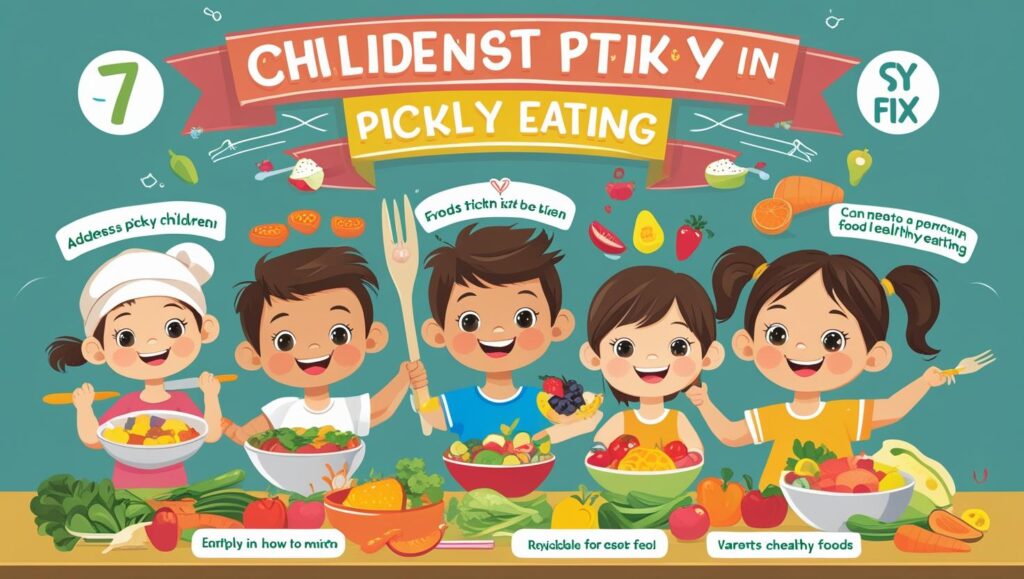
Introduction
Picky eaters aren’t just “hard to please”—their limited diets can trigger serious health problems. From brittle bones in kids to chronic fatigue in adults, the consequences of prolonged food avoidance are more than skin deep.
1. Nutritional Deficiencies: The Silent Epidemic
Picky eaters risk dangerous shortages of:
| Nutrient | Health Impact | High-Risk Foods Avoided |
|---|---|---|
| Iron | Anemia, fatigue, poor immunity | Red meat, spinach, beans |
| Zinc | Stunted growth, weakened immunity | Shellfish, nuts, whole grains |
| Calcium/Vitamin D | Brittle bones, dental decay | Dairy, fish, fortified foods |
| Fiber | Constipation, gut inflammation | Fruits, vegetables, legumes |
📊 Studies show 65% of picky children lack ≥3 essential nutrients (Journal of Nutrition, 2023).
2. Physical Health Consequences
In Children:
- Growth impairment: Low height/weight percentiles
- Tooth decay: Sugar-heavy “safe foods” (e.g., crackers, juice)
- Constipation: From low-fiber diets
In Adults:
- Osteoporosis: 30% higher fracture risk with lifelong avoidance (Mayo Clinic)
- Cardiovascular issues: Low omega-3s → high triglycerides
- Chronic fatigue: Iron/B12 deficiency → oxygen-starved cells

3. Mental & Cognitive Impacts
- Anxiety/depression: Gut-brain axis disruption from poor nutrition
- ADHD misdiagnosis: Iron/zinc deficiency mimics attention disorders
- Reduced academic performance: Poor focus from blood sugar spikes/crashes
4. Long-Term Disease Risks
| Prolonged Deficiency | Linked Condition |
|---|---|
| Low antioxidants (fruits/veg) | Cancer, accelerated aging |
| Low omega-3s (fish/seeds) | Dementia, depression |
| High processed carbs | Type 2 diabetes, fatty liver |
5. The Vicious Cycle of Avoidance
Food aversion → Nutrient gaps → Gut dysfunction → Worse aversion
- Example: Low zinc dulls taste buds → Foods taste blander → More rejection
6. Evidence-Based Solutions
For Nutritional Gaps:
- “Food chaining”: Gradually shift safe foods toward healthier versions (e.g., chicken nuggets → baked chicken strips → grilled chicken).
- Stealth nutrition: Blend veggies into sauces, add protein powder to pancakes.
- Targeted supplements: Liquid iron, chewable multivitamins (gummy versions often lack key nutrients).

For Sensory Challenges:
- Texture therapy: Use food play (non-eating exposure) to reduce sensitivity.
- Temperature tweaks: Serve veggies cold (crisper) vs. mushy steamed.
When to Seek Medical Help
Red flags requiring intervention:
⚠️ Children: Falling off growth curves, refusing entire food groups (e.g., no proteins)
⚠️ Adults: Unexplained hair loss, constant exhaustion, recurrent fractures
Early intervention prevents 80% of severe complications (NIH, 2024).
Eating Well with Food Aversion: A Practical Survival Guide
Ellyn Satter Institute (division of responsibility).

